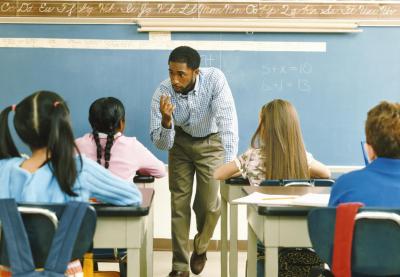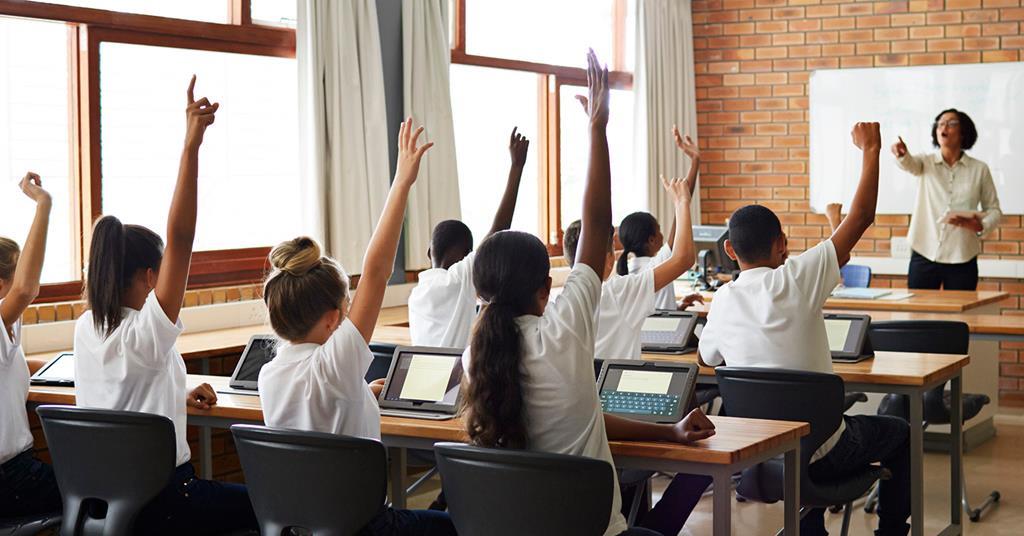Accelerate Learning with Primary Science Tuition Singapore for Young Minds
Accelerate Learning with Primary Science Tuition Singapore for Young Minds
Blog Article
A Comprehensive Guide to the Different Knowing Techniques in Main Scientific Research Guideline
The exploration of diverse knowing approaches in primary science direction provides a possibility for teachers to boost trainee involvement and comprehension dramatically. By examining hands-on understanding strategies, inquiry-based approaches, and joint methods, we can identify effective methods that satisfy different discovering styles. Furthermore, the assimilation of innovation and differentiated guideline plays an essential role in fostering a comprehensive environment. The concern stays: exactly how can these methods be effectively implemented in the class to optimize their effect? The answer exists in a more detailed assessment of each approach and its effects for training scientific research.

Hands-On Knowing Strategies
Hands-on discovering techniques play a critical duty in key science direction, involving trainees in active exploration and trial and error. These methods permit students to communicate directly with phenomena and products, fostering a much deeper understanding of scientific concepts. By utilizing manipulatives, versions, and real-life experiments, teachers produce an environment where pupils can observe, hypothesize, and check their concepts.
Such techniques not just boost understanding but also cultivate critical thinking and problem-solving skills. When pupils get involved in activities like building straightforward devices, planting seeds, or conducting chain reactions, they are motivated to ask questions and look for responses via their very own observations. This experiential technique aids to demystify complicated clinical principles, making them a lot more relatable and easily accessible.
Furthermore, hands-on learning promotes collaboration amongst peers, as pupils frequently operate in groups to conduct experiments or share searchings for. This team effort not only enriches their understanding experience however likewise develops vital social abilities. Eventually, integrating hands-on techniques in primary scientific research direction fosters a lifelong love of discovering and curiosity concerning the natural world, laying a strong structure for future scholastic quests in scientific research and past.
Inquiry-Based Learning
Inquiry-based understanding is an educational method that urges pupils to ask inquiries, investigate phenomena, and create their own understanding of scientific concepts. This approach shifts the focus from typical teacher-led instruction to an extra student-centered experience, where students take the campaign in their educational trip. By cultivating inquisitiveness, inquiry-based knowing promotes deeper involvement with the material, allowing students to check out topics in a significant context.
In method, this method usually includes hands-on experiments, monitorings, and vital thinking tasks that line up very closely with the clinical technique. Students are urged to formulate theories, layout investigations, and analyze information, which grows essential abilities such as analytical and analytic reasoning. The role of the instructor in this structure is to facilitate expedition, assisting students with the questions procedure while encouraging independent idea and collaboration.
Additionally, inquiry-based learning nurtures a feeling of ownership over the learning procedure, motivating pupils to go after understanding proactively. This method not only improves understanding of scientific concepts however likewise promotes a lifelong love for understanding, equipping students with the abilities required to browse an increasingly complicated globe.
Collaborative Learning Approaches
Collective discovering approaches encourage students to take part in significant communications with peers, fostering a common duty for their educational outcomes. In main scientific research direction, these techniques motivate students to function with each other to discover scientific ideas, address problems, and conduct experiments (primary science tuition Singapore). By getting involved in team activities, students can utilize diverse point of views, permitting richer understanding and retention of clinical understanding
One trick element of collaborative learning is the focus on interaction skills. imp source Trainees have to articulate their thoughts, pay attention actively to others, and bargain ideas, every one of which are crucial competencies in both real-world and academic contexts. This social communication not just enhances their understanding of scientific principles yet also advertises synergy and problem resolution skills.
Moreover, joint discovering usually results in enhanced motivation and involvement. They are more most likely to take ownership of their discovering journey when trainees see the value of their contributions within a group. Educators can promote this process deliberately organized team tasks that straighten with educational program goals while offering advice on reliable partnership strategies. In general, integrating joint learning strategies in key scientific research direction grows a dynamic learning environment that prepares pupils for future academic and social obstacles.
Technology Integration in Science
The combination of technology in primary scientific research guideline improves learning experiences by offering innovative tools and resources that sustain different training techniques, including collective learning - primary science tuition Singapore. Using electronic platforms, simulations, and interactive applications allows pupils to involve deeply with scientific ideas, helping with a much more hands-on method to learning
Digital labs, for example, make it possible for students to perform experiments safely and efficiently, advertising inquiry-based learning. These devices can imitate real-world clinical situations, permitting students to imagine intricate processes that would certainly be tough to replicate in a standard classroom setting. In addition, modern technology fosters interaction and collaboration among pupils, as they can share searchings for and interact on tasks with on the internet systems.
Additionally, multimedia presentations and educational video clips can improve lessons by accommodating varied learning designs, making abstract principles much more obtainable. Information analysis tools also equip students to collect and translate scientific information, strengthening essential believing abilities. Generally, the calculated incorporation of innovation in main scientific research instruction not only improves engagement yet additionally prepares trainees for a technically sophisticated society, outfitting them with necessary skills for future scientific endeavors.
Distinguished Guideline Approaches
Separated guideline methods are important for addressing the varied demands of learners in key scientific research education and learning. These methods enable teachers to customize their teaching methods to suit differing capabilities, interests, and finding out styles within the classroom. By using distinguished direction, instructors can produce an inclusive environment that fosters check my source interaction and boosts understanding of scientific go to my site principles.
One reliable approach is to utilize adaptable grouping, which allows pupils to collaborate with peers at similar skill levels or with differing point of views. This technique encourages peer discovering and advertises critical reasoning. Furthermore, supplying selections in tasks can encourage trainees, enabling them to pick tasks that resonate with their interests while still meeting curricular goals.
Additionally, integrating tiered tasks is one more important method. By creating tasks with varying levels of complexity, teachers can make certain that all trainees are appropriately challenged, no matter their efficiency. Making use of formative evaluations to assess comprehending additional allows instructors to adjust their training approaches dynamically, making sure that each learner obtains the assistance they need.
Eventually, carrying out differentiated instruction strategies in key scientific research education and learning not just enhances student discovering outcomes however also grows an interest for science, preparing trainees for future academic pursuits.

Conclusion
In recap, reliable main science direction requires a multifaceted approach that includes hands-on understanding, inquiry-based techniques, and joint methods. The integration of innovation and distinguished direction better caters to varied knowing styles, promoting an atmosphere for exploration and important reasoning. By carrying out these approaches, teachers can boost trainee engagement and comprehension, eventually nurturing a lifelong enthusiasm for scientific research and questions. Such thorough methodologies are necessary for creating educated and interested future scientists.
The expedition of varied understanding techniques in primary scientific research guideline presents a possibility for teachers to enhance student interaction and understanding dramatically.Hands-on understanding methods play a crucial role in key science direction, engaging students in active expedition and testing.Inquiry-based understanding is a training approach that encourages trainees to ask inquiries, investigate phenomena, and create their own understanding of clinical concepts.Joint knowing methods encourage students to involve in significant communications with peers, cultivating a shared responsibility for their educational results. Overall, integrating collective knowing methods in key scientific research instruction grows a dynamic discovering setting that prepares trainees for future scholastic and social challenges.
Report this page